AI Research
Plane GPS systems are under sustained attack


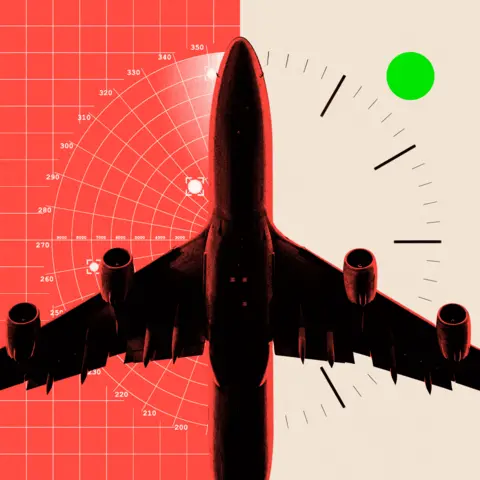 BBC
BBCAs a Ryanair flight from London approached Vilnius, Lithuania, on 17 January, its descent was suddenly aborted. Just minutes from touching down, the aircraft’s essential Global Positioning System (GPS) suffered an unexplained interference, triggering an emergency diversion.
The Boeing 737 MAX 8-200 had already descended to around 850ft (259m) when the disruption occurred. Instead of landing, the plane was forced to climb back into the sky and divert nearly 400km (250 miles) south to Warsaw, Poland. Lithuanian air authorities later confirmed the aircraft had been affected by “GPS signal interference”.
This was not an isolated incident. Over the last three months of 2024, more than 800 cases of GPS interference were recorded in Lithuanian airspace. Estonia and Finland have also raised concerns, accusing Russia of deploying technology to jam satellite navigation signals near Nato’s eastern flank – though the country has denied that. Last March the then Defence Secretary, Grant Shapps, was on a plane that had its GPS signal jammed while flying close to Russian territory.
The threat of GPS jamming extends beyond aviation. Without GPS, our lives would grind to a halt: in 2017, a government report stated that systematic GPS jamming could bring the UK’s financial, electricity and communications systems to a standstill.
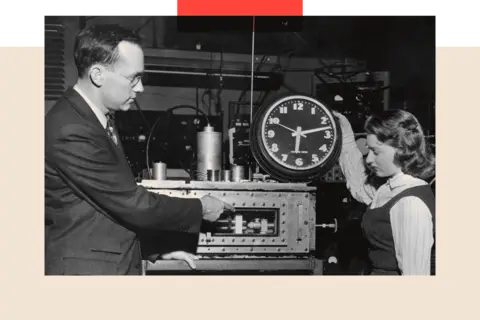 Getty Images
Getty ImagesTo pinpoint our exact location, we need to know the exact time. GPS works by users receiving signals from multiple satellites. The length of time it takes each signal to reach a device is used to determine exactly where on Earth we are.
Very large atomic clocks communicate directly with the satellites, allowing them to know the time to within 100 billionths of a second, and this precision timing is key to a variety of economic activities around the world, including communication systems, electrical power grids, and financial networks.
The potential cost of losing GPS has been put at £1.4bn each day – no wonder GPS jamming is on the government’s national risk register as one of the UK’s greatest threats.
With this in mind, a group of British scientists – dubbed the “Time Lords” – has been asked to come up with a solution.
The plan is simple: to develop a more secure alternative to GPS by enabling the portable use of new atomic clocks, rather than relying on signals from satellites in space that can be jammed. But its execution is fiendishly difficult: to harness the power of the atom, develop a new type of clock, and even change the way we measure time itself – all within a few years.
In recent months, the UK government has set up research initiatives to tackle the threat of GPS jamming. But turning prototypes into robust devices that could one day be incorporated into our phones is an enormous undertaking – and the need for the new technology is getting ever more urgent.
A new way of measuring time
The challenge can be compared to the invention of a portable clock for marine navigation by John Harrison in the 18th Century, which solved the so-called longitude problem, allowing a new era of trade and a golden age of exploration.
Three hundred years on, researchers are once again racing to perfect a new clock to solve the GPS problem – and the impact could be at least as transformative.
“History shows that each time we have an improvement in the ability to measure time, new applications follow to make things possible that people didn’t dream of before,” says Dr Helen Margolis, head scientist (time and frequency) of the UK’s timing laboratories at the National Physical Laboratory (NPL) in south-west London.
In 1967, the world’s timekeepers, an intergovernmental body called the General Conference on Weights and Measures, agreed to define time using atomic clocks, rather than by the Earth’s rotation.
The switch transformed our world just as radically as Harrison’s clock, laying the foundation for GPS and similar space-based systems. These provided precise timekeeping from atomic clocks on satellites, which allowed rapid and huge volumes of communications, computation, and transactions to be carried out everywhere in the world near instantaneously, as well as more precise navigation.
 Getty Images
Getty ImagesThe search for a new portable alternative to GPS involves a field called quantum technologies, finding ways to manipulate atoms. Much of the buzz around the subject in recent years has been about the development of powerful quantum computers which, the narrative goes, will make our fastest supercomputers seem like abacuses by comparison.
But a quieter revolution to improve navigation and measurement of time has flown under the radar, and it is in this field that quantum technology is set to make its earliest impact, according to Prof Douglas Paul of the UK Hub for Quantum Enabled Position Navigation and Timing (QEPNT), which was set up last December by the government to develop these new devices.
“We are expecting to see some sort of navigation system within two to five years in the marketplace,” he says. “So, some of these technologies are already quite advanced.”
The ‘Time Lords’
Prof Paul and his quantum scientists are working with Dr Margolis and her fellow researchers at NPL, who have been given the “Time Lords” nickname by other horologists. In 1955, the NPL invented the first atomic clock of the sort that is used today, based on the frequency of radiation from an atom of the element caesium.
GPS and other satellite navigation systems reset their own clocks by touching base with these more accurate clocks on the ground. For the alternative to GPS, the scientists will need a new type of atomic clock that can eventually be miniaturised and robust enough to work in everyday situations, rather than the carefully controlled conditions inside a lab.
The NPL researchers are perfecting a so-called optical clock to achieve this, which is 100 times more accurate than the most accurate caesium clocks used today. It looks as if it might be part of Dr Who’s Tardis and is stimulated with laser light rather than microwaves.
When optical clocks take over from caesium ones as the timepieces that determine Universal Coordinated Time (UTC), the way the passage of time is defined will also have to change, according to Dr Margolis.
“The international community has drawn up a road map for the redefinition of the second,” she tells BBC News.
The NPL’s immediate hope is to have a national network by 2030, connecting four atomic clocks across the UK that businesses can plug into for secure accurate timekeeping and for developing new innovative applications that harness ultra-fast time.
Eventually, critical systems in the UK in finance, telecommunications, energy, utilities and national security could switch over – though that would take longer. “To convert everything is at least a decade away, and probably significantly longer,” says Prof Paul.
Yet the stakes are high, and the alternative this new technology offers is significant. “The US Department of Defence might decide to stop supporting GPS, it could be taken out in a conflict or by an accident,” he says. “There is no guarantee GPS … will always be available. With all the jamming and spoofing [where a criminal gives a false signal with an incorrect time and location], you cannot always guarantee you have an assured signal, so if you cannot get or trust the information then people will stop using it.”
 UK MOD
UK MODWhile this type of research is taking place around the world, it’s being led by the UK. When an aircraft with the technology on board carried out a test flight in May 2024, the then science minister Andrew Griffith described it as “further proof of the UK as one of the world leaders on quantum”. According to the government, it was the first test of this type of technology in the UK on an aircraft in flight, and “the first such flight worldwide that has been publicly acknowledged”.
By carrying a group of atoms cooled to -273C on the plane itself, rather than relying on an external signal, the technology can’t be interfered with by jamming.
But the problem is that the equipment is still too large to be used routinely on planes.
Henry White, part of the team from BAE Systems that worked on the test flight, told BBC News that he thought the first application could be aboard ships, “where there’s a bit more space”.
Quantum clocks, gyroscopes and accelerometers are large, bulky and incredibly expensive, with an accurate quantum clock costing around £100,000. Yet military research is allowing the creation of smaller, better and cheaper systems.
 Press Association
Press AssociationGPS jamming is causing problems for the British military in conflict zones such as Ukraine. One of the main challenges faced by scientists at the government’s Defence, Science and Technology Laboratory (DSTL) is making the sensitive technology work not just in the real world, which in the Navy’s case is often in very choppy seas, but also in the harshest of environments; the battlefield, according to a lead researcher at the DSTL, who has to remain anonymous for security reasons.
“We are harnessing atoms,” she points out.
“You have vibrations, you have pressure changes, you have temperature changes, and you have environments which have all of these different variables going on while you are trying to manipulate the properties of light. So, it’s precision that is needed”.
Atomic clocks in our pockets
The ultimate aim for some of those working on this new technology is for each of us to have the equivalent of our own personal GPS system incorporated into our phones.
This would comprise a miniaturised optical clock as well as a tiny gyroscope, so we know which direction we are going in, and a device called an accelerometer, which will tell us how fast we are going.
QEPNT has been set up by the government to shrink the devices on to a chip, making them robust enough for everyday life and affordable for everyone.
That process isn’t going to happen soon, though. “This is many decades away from happening for all critical national infrastructure across the UK,” says Prof Paul.
Quantum clock researchers are facing exactly the same problems experienced by John Harrison when he was developing his portable marine clock in the 18th Century. Mr Harrison had to build a clock whose timekeeping was not affected by changes in temperature, pressure or humidity, and was able to function in a constantly moving ship – his greatest difficulty was to make it small.
But it turned out that his difficulty was also the path to his solution. The smaller he made his clocks, the more robust he found they were at sea.
“Harrison found that it was it easier to isolate them from all those external influences,” says another DSTL scientist.
“As was the case 300 years ago, as we make these systems smaller, it will become easier to control the environment around them and isolate them from the effects of vibration, temperature, pressure, and humidity.”
Prominent 18th-Century scientists, including Sir Isaac Newton, thought that navigation with marine clocks was impossible. But eventually Mr Harrison, a simple clockmaker and carpenter, proved his more illustrious colleagues wrong.
Bringing prototype optical clocks first into the battlefield and then eventually into everyday life is just as challenging. Will the scientists working on the problem be able to find solutions fast enough?
One day we might have them in our pockets, but the more urgent aim is to get them in a state where we can safely fly, as incidents of GPS jamming on planes and critical computer systems increase. The Time Lords and quantum scientists hope to continue the humble clockmaker’s legacy – transforming the measurement of time, and protecting the UK’s critical systems from GPS attack.
Top image credit: Getty Images
BBC InDepth is the home on the website and app for the best analysis, with fresh perspectives that challenge assumptions and deep reporting on the biggest issues of the day. And we showcase thought-provoking content from across BBC Sounds and iPlayer too. You can send us your feedback on the InDepth section by clicking on the button below.
AI Research
AI scientist says ‘learning how to learn’ will be next generation’s most needed skill
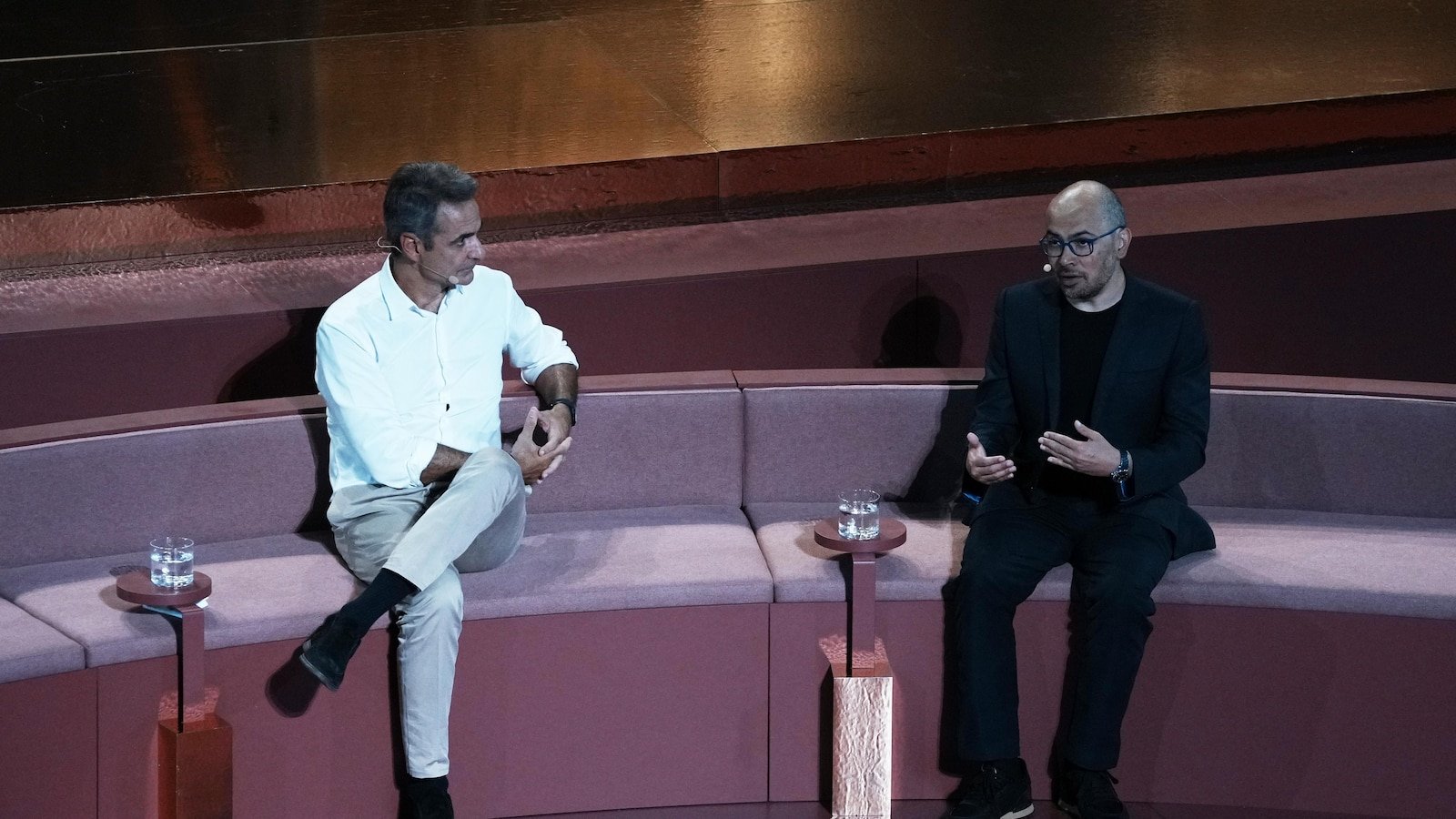
ATHENS, Greece — A top Google scientist and 2024 Nobel laureate said Friday that the most important skill for the next generation will be “learning how to learn” to keep pace with change as Artificial Intelligence transforms education and the workplace.
Speaking at an ancient Roman theater at the foot of the Acropolis in Athens, Demis Hassabis, CEO of Google’s DeepMind, said rapid technological change demands a new approach to learning and skill development.
“It’s very hard to predict the future, like 10 years from now, in normal cases. It’s even harder today, given how fast AI is changing, even week by week,” Hassabis told the audience. “The only thing you can say for certain is that huge change is coming.”
The neuroscientist and former chess prodigy said artificial general intelligence — a futuristic vision of machines that are as broadly smart as humans or at least can do many things as well as people can — could arrive within a decade. This, he said, will bring dramatic advances and a possible future of “radical abundance” despite acknowledged risks.
Hassabis emphasized the need for “meta-skills,” such as understanding how to learn and optimizing one’s approach to new subjects, alongside traditional disciplines like math, science and humanities.
“One thing we’ll know for sure is you’re going to have to continually learn … throughout your career,” he said.
The DeepMind co-founder, who established the London-based research lab in 2010 before Google acquired it four years later, shared the 2024 Nobel Prize in chemistry for developing AI systems that accurately predict protein folding — a breakthrough for medicine and drug discovery.
Greek Prime Minister Kyriakos Mitsotakis joined Hassabis at the Athens event after discussing ways to expand AI use in government services. Mitsotakis warned that the continued growth of huge tech companies could create great global financial inequality.
“Unless people actually see benefits, personal benefits, to this (AI) revolution, they will tend to become very skeptical,” he said. “And if they see … obscene wealth being created within very few companies, this is a recipe for significant social unrest.”
Mitsotakis thanked Hassabis, whose father is Greek Cypriot, for rescheduling the presentation to avoid conflicting with the European basketball championship semifinal between Greece and Turkey. Greece later lost the game 94-68.
____
Kelvin Chan in London contributed to this story.
AI Research
Should You Forget Nvidia and Buy These 2 Artificial Intelligence (AI) Stocks Instead?
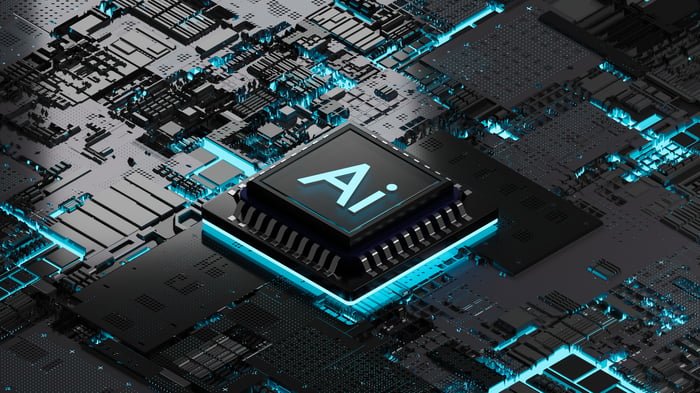
Both AMD and Broadcom have an opportunity to outperform in the coming years.
Nvidia is the king of artificial intelligence (AI) infrastructure, and for good reason. Its graphics processing units (GPUs) have become the main chips for training large language models (LLMs), and its CUDA software platform and NVLink interconnect system, which helps its GPUs act like a single chip, have helped create a wide moat.
Nvidia has grown to become the largest company in the world, with a market cap of over $4 trillion. In Q2, it held a whopping 94% market share for GPUs and saw its data center revenue soar 56% to $41.1 billion. That’s impressive, but those large numbers may be why there could be some better opportunities in the space.
Two stocks to take a closer look at are Advanced Micro Devices (AMD 1.91%) and Broadcom (AVGO 0.19%). Both are smaller players in AI chips, and as the market shifts from training toward inference, they’re both well positioned. The reality is that while large cloud computing and other hyperscalers (companies with large data centers) love Nvidia’s GPUs they would prefer more alternatives to help reduce costs and diversify their supply chains.
1. AMD
AMD is a distant second to Nvidia in the GPU market, but the shift to inference should help it. Training is Nvidia’s stronghold, and where its CUDA moat is strongest. However, inference is where demand is accelerating, and AMD has already started to win customers.
AMD management has said one of the largest AI model operators in the world is using its GPUs for a sizable portion of daily inference workloads and that seven of the 10 largest AI model companies use its GPUs. That’s important because inference isn’t a one-time event like training. Every time someone asks a model a question or gets a recommendation, GPUs are providing the power for these models to get the answer. That’s why cost efficiency matters more than raw peak performance.
That’s exactly where AMD has a shot to take some market share. Inference doesn’t need the same libraries and tools as training, and AMD’s ROCm software platform is more than capable of handling inference workloads. And once performance is comparable, price becomes more of a deciding factor.
AMD doesn’t need to take a big bite out of Nvidia’s share to move the needle. Nvidia just posted $41.1 billion in data center revenue last quarter, while AMD came in at $3.2 billion. Even small wins can have an outsize impact when you start from a base that is a fraction of the size of the market leader.
On top of that, AMD helped launch the UALink Consortium, which includes Broadcom and Intel, to create an open interconnect standard that competes with Nvidia’s proprietary NVLink. If successful, that would break down one of Nvidia’s big advantages and allow customers to build data center clusters with chips from multiple vendors. That’s a long-term effort, but it could help improve the playing field.
With inference expected to become larger than training over time, AMD doesn’t need to beat Nvidia to deliver strong returns; it just needs a little bigger share.
Image source: Getty Images.
2. Broadcom
Broadcom is attacking the AI opportunity from another angle, but the upside may be even more compelling. Instead of designing off-the-shelf GPUs, Broadcom is helping customers make their own customer AI chips.
Broadcom is a leader in helping design application-specific integrated circuits, or ASICs, and it has taken that expertise and applied it to making custom AI chips. Its first customer was Alphabet, which it helped design its highly successful Tensor Processing Units (TPUs) that now help power Google Cloud. This success led to other design wins, including with Meta Platforms and TikTok owner ByteDance. Combined, Broadcom has said these three customers represent a $60 billion to $90 billion serviceable addressable market by its fiscal 2027 (ending October 2027).
However, the news got even better when the company revealed that a fourth customer, widely believed to be OpenAI, placed a $10 billion order for next year. Designing ASICs is typically not a quick process. Alphabet’s TPUs took about 18 months from start to finish, which at the time was considered quick. But this newest deal shows it can keep this fast pace. This also bodes well with future deals, as late last year it was revealed that Apple will be a fifth customer.
Custom chips have clear advantages for inference. They’re designed for specific workloads, so they deliver better power efficiency and lower costs than off-the-shelf GPUs. As inference demand grows larger than training, Broadcom’s role as the go-to design partner becomes more valuable.
Now, custom chips have large upfront costs to design and aren’t for everyone, but this is a huge potential opportunity for Broadcom moving forward.
The bottom line
Nvidia is still the dominant player in AI infrastructure, and I don’t see that changing anytime soon. However, both AMD and Broadcom have huge opportunities in front of them and are starting at much smaller bases. That could help them outperform in the coming years.
Geoffrey Seiler has positions in Alphabet. The Motley Fool has positions in and recommends Advanced Micro Devices, Alphabet, Apple, Meta Platforms, and Nvidia. The Motley Fool recommends Broadcom. The Motley Fool has a disclosure policy.
AI Research
Google’s top AI scientist says ‘learning how to learn’ will be next generation’s most needed skill
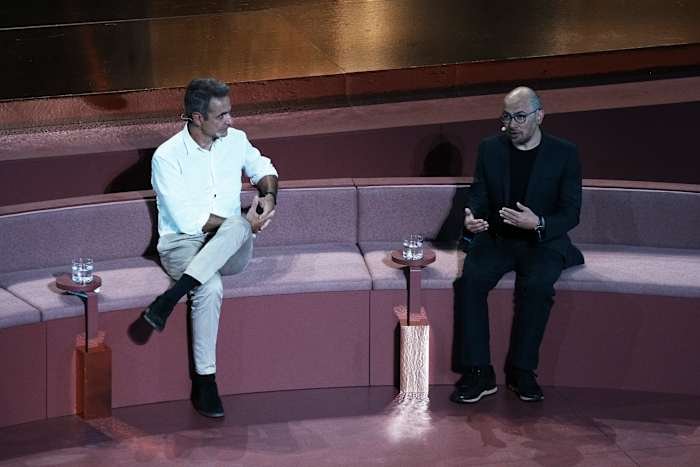
ATHENS – A top Google scientist and 2024 Nobel laureate said Friday that the most important skill for the next generation will be “learning how to learn” to keep pace with change as Artificial Intelligence transforms education and the workplace.
Speaking at an ancient Roman theater at the foot of the Acropolis in Athens, Demis Hassabis, CEO of Google’s DeepMind, said rapid technological change demands a new approach to learning and skill development.
“It’s very hard to predict the future, like 10 years from now, in normal cases. It’s even harder today, given how fast AI is changing, even week by week,” Hassabis told the audience. “The only thing you can say for certain is that huge change is coming.”
The neuroscientist and former chess prodigy said artificial general intelligence — a futuristic vision of machines that are as broadly smart as humans or at least can do many things as well as people can — could arrive within a decade. This, he said, will bring dramatic advances and a possible future of “radical abundance” despite acknowledged risks.
Hassabis emphasized the need for “meta-skills,” such as understanding how to learn and optimizing one’s approach to new subjects, alongside traditional disciplines like math, science and humanities.
“One thing we’ll know for sure is you’re going to have to continually learn … throughout your career,” he said.
The DeepMind co-founder, who established the London-based research lab in 2010 before Google acquired it four years later, shared the 2024 Nobel Prize in chemistry for developing AI systems that accurately predict protein folding — a breakthrough for medicine and drug discovery.
Greek Prime Minister Kyriakos Mitsotakis joined Hassabis at the Athens event after discussing ways to expand AI use in government services. Mitsotakis warned that the continued growth of huge tech companies could create great global financial inequality.
“Unless people actually see benefits, personal benefits, to this (AI) revolution, they will tend to become very skeptical,” he said. “And if they see … obscene wealth being created within very few companies, this is a recipe for significant social unrest.”
Mitsotakis thanked Hassabis, whose father is Greek Cypriot, for rescheduling the presentation to avoid conflicting with the European basketball championship semifinal between Greece and Turkey. Greece later lost the game 94-68.
____
Kelvin Chan in London contributed to this story.
Copyright 2025 The Associated Press. All rights reserved. This material may not be published, broadcast, rewritten or redistributed without permission.
-

 Business2 weeks ago
Business2 weeks agoThe Guardian view on Trump and the Fed: independence is no substitute for accountability | Editorial
-
Tools & Platforms1 month ago
Building Trust in Military AI Starts with Opening the Black Box – War on the Rocks
-

 Ethics & Policy2 months ago
Ethics & Policy2 months agoSDAIA Supports Saudi Arabia’s Leadership in Shaping Global AI Ethics, Policy, and Research – وكالة الأنباء السعودية
-

 Events & Conferences4 months ago
Events & Conferences4 months agoJourney to 1000 models: Scaling Instagram’s recommendation system
-

 Jobs & Careers2 months ago
Jobs & Careers2 months agoMumbai-based Perplexity Alternative Has 60k+ Users Without Funding
-

 Podcasts & Talks2 months ago
Podcasts & Talks2 months agoHappy 4th of July! 🎆 Made with Veo 3 in Gemini
-

 Education2 months ago
Education2 months agoMacron says UK and France have duty to tackle illegal migration ‘with humanity, solidarity and firmness’ – UK politics live | Politics
-

 Education2 months ago
Education2 months agoVEX Robotics launches AI-powered classroom robotics system
-

 Funding & Business2 months ago
Funding & Business2 months agoKayak and Expedia race to build AI travel agents that turn social posts into itineraries
-

 Podcasts & Talks2 months ago
Podcasts & Talks2 months agoOpenAI 🤝 @teamganassi


